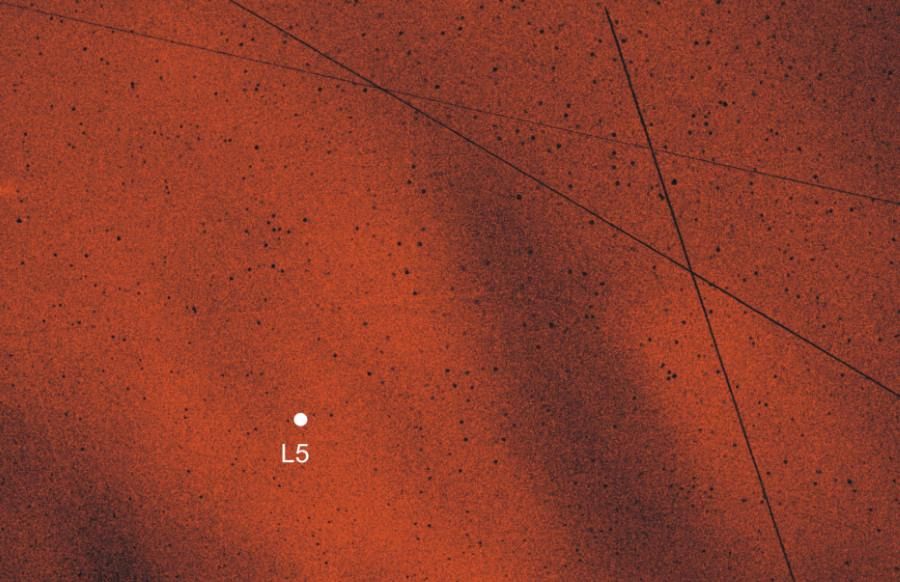The existence of Kordilovsky’s moons has been confirmed
Astronomers have speculated for decades about dust clouds supposedly located at Lagrange points. Their existence was first suggested by Polish astronomer Kazimierz Kordylewski in 1961. Now, their presence has been confirmed by Hungarian scientists.
Kordylewski’s moons – Two mysterious dust clouds trapped between the competing gravitational fields of the Earth and Moon – were first observed in 1956. It was spotted by Kazimierz Kordylewski at the observatory on Kasprowy Wierch, hence the name cloud . Five years p Later, we were able to take the first photographs of the cloud The Earth-Moon system has five points, L4 and L5, but the difficulty of observing them has caused many scientists to have doubted their existence.
New two-stage study by scientist from the University of Eötvösa Loránda in Hungary confirm their existence. The study was published in the „Monthly Notices of Royal Astronomical Society” (Part I, Part II).
– The Kordylevsky Moons are two of the most difficult objects to find and although they are so close to the Earth, at the same distance as the Moon, they are mostly overlooked by astronomers . Intriguing that our planet has dusty pseudo-satellites in orbit right next to the moon – said Judit Slíz-Balogh, first author of the publication.
Kordylewski’s moons are located at libration points about 400 thousand kilometers from the Earth. The Earth-Moon system has five points The study was published in the journal Libra, also known as Lagrange points’a, in which The gravitational forces of the moons keep the relative position of the objects placed there .
Two of them – L4 and L5 – form r in the sidereal tr They are at an angle with the Earth and the Moon and move around the as the Moon moves along its orbit. They are not completely stable, they are affected by the gravitational pull of the Sun.
Hungarian researchers have modeled the dust moons of Kordylevsky to assess how b are formed and how they can be detected. They have performed nearly two million simulations. „According to our computer simulations, the Kordylevsky moons have a constantly changing, pulsating and spinning shape. The structure and density of the cloud is not constant” – scientists wrote in the publication.
But above all, scientists wanted to see them. To facilitate this, they intended to use r filter in polarization, which They transmit light with a specific direction of vibration, similar to that found in some eyepiece types in solar flares. Scattered or reflected light is always more or less polarized, depending on the angle of scattering or reflection.
Armed with a linearly polarizing filter system in attached to the lens of a camera and a CCD detector, they directed telescopes in a private observatory Slíz-Balogh in Hungary towards the L5 punctum – where a dust cloud should be.
Their results confirm the existence of the Moon in Kordylewski. The images taken show polarized light reflected from the dust, extending beyond the field of view of the camera lens. The observed pattern r matches the predictions of the same group of researchers in an earlier paper and is consistent with observations made by Kordylewski six decades ago.
Points L4 and L5 are seen as potential sites for space probes and as transfer stations for missions exploring the far Solar System. There are r also suggestions for storing dirt in dw points. Now scientists will have to check whether the dust there poses a threat to equipment.
